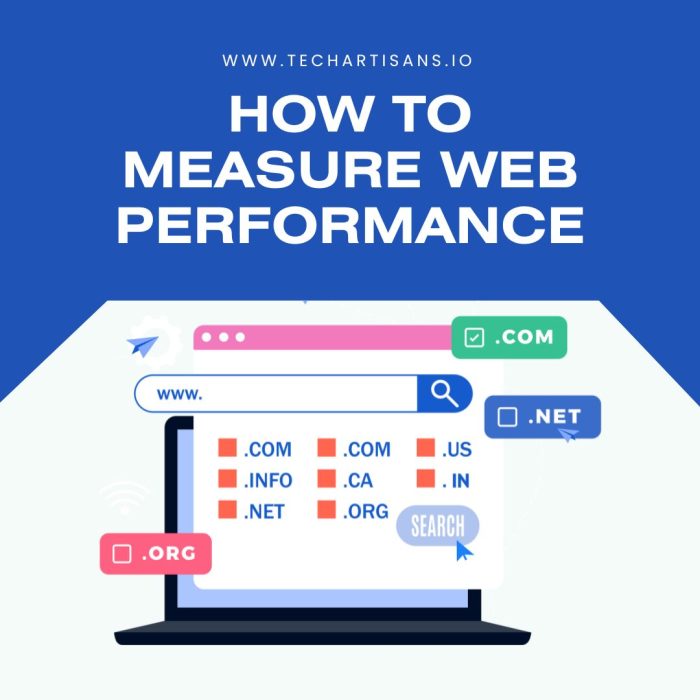In the digital age, your website’s performance significantly impacts your business. Quick-loading and efficient web pages lead to higher user engagement and conversions. Measuring website performance is vital for improving the user experience and building customer satisfaction, loyalty, and business growth. In this article, I will guide you how you can measure web performance accurately.
How to Measure Web Performance
Measuring Website Performance is not just about understanding the speed of your website. Still, it also entails analyzing how various elements interact, impact user experience, and contribute to your business goals. With the right metrics and tools, you can significantly optimize your website’s performance and, subsequently, your business success.
Understanding Web Performance
A website’s performance involves web speed and responsiveness, determining how fast pages load and interact. It directly impacts user experience. A one-second delay in loading pages can reduce views, customer satisfaction, and conversions. Studies reveal that a two-second delay can double bounce rates, underlining the critical link between web performance and user satisfaction.
Key Web Performance Metrics
Before we dive into the specifics of measuring website performance, it’s crucial to understand the key metrics involved. These metrics provide a numerical representation of your website’s performance, acting as a concrete benchmark for evaluation and improvement.
User Satisfaction and Apdex
User satisfaction is like a report card for your website’s performance. It is measured by asking users for feedback or observing their behavior on your site. Apdex, a simple tool, categorizes users into Happy, Patient, or Frustrated based on on-site response times, scoring 0 to 1. A score of 1 means everyone is happy. Monitoring User Satisfaction and Apdex helps improve your website, ensuring a great user experience and better web performance.
First Paint and First Contentful Paint
First Paint (FP) is when the first visual change occurs on a webpage after a user clicks. It shows that the page is loading but not necessarily that the content is visible. FP is essential for understanding how fast a page appears to users.
First Contentful Paint (FCP) measures the time from when a user navigates to a webpage until the browser displays the first content from the DOM. It indicates that real content, like text or images, is visible, offering a more accurate view of the user’s experience.
Time to Interactive
Time to Interactive (TTI) measures when a webpage becomes fully interactive, allowing users to smoothly interact with elements. It’s vital because unresponsive pages can frustrate users. TTI goes beyond visual readiness, focusing on when the page can be actively used. Monitoring TTI helps pinpoint and fix issues that may delay interactivity, ensuring a smoother user experience and better web performance.
Page Speed and Load Time
Page Speed measures how quickly a page displays its content, which is crucial for a good user experience and SEO ranking. Tools like Google’s PageSpeed Insights offer improvement suggestions. Load Time tracks the total time to load all page elements. Slow load times can drive users away, so monitoring and optimizing elements are essential. Tools like Pingdom and GTmetrix provide insights and optimization advice.
Time to First Byte
TTFB is a key web performance metric, measuring the time from a user’s request to the browser receiving the first byte of the page. It reflects server and network responsiveness. High TTFB can slow down your site. Tools like PageSpeed Insights, Pingdom, or Webpagetest help evaluate TTFB. Improving TTFB enhances website speed and overall performance. Google recommends TTFB under 200ms.
DNS Lookup Time
DNS Lookup Time is the time it takes for a browser to find the right address for a website. If this process is slow, it can delay page loading. You can monitor and speed up DNS lookup times using tools like Pingdom or Google’s PageSpeed Insights. Picking a good DNS provider or using DNS prefetching can help improve website performance by reducing these lookup times. It’s like making sure your GPS finds the destination quickly.
Error Rate
Error rate measures how often things go wrong on your website compared to total attempts. High error rates can frustrate users. Tools like Google Analytics help monitor errors. Low error rates create a reliable, user-friendly website, boosting user satisfaction and business success. It’s like ensuring a smooth experience for your website visitors.
Peak Response Time
Peak response time measures the longest delay when your site gets many visitors. High peaks can slow down your site. Monitoring helps identify issues and maintain user satisfaction, especially during busy times. It’s essential for web performance and providing reliable service under heavy traffic.
Hardware Utilization
Hardware utilization measures how much your website uses your server’s resources like CPU and memory. High utilization can slow down your site. Monitoring is vital to ensure your server can handle your website’s demands. Tools like Google’s PageSpeed Insights or New Relic can help. By optimizing hardware utilization, you maintain a responsive and high-performing website.
Uptime
Uptime measures how often your website is available and working. High uptime is vital for online businesses to avoid lost sales and a damaged reputation. Monitoring uptime helps detect and fix issues quickly. Tools like Pingdom, Uptime Robot, and Google’s PageSpeed Insights can provide uptime statistics. While 100% uptime is ideal, maintaining 99.9% or higher is considered good practice, ensuring your website is reliably accessible for better web performance.
Tools for Measuring Web Performance
In the quest for optimizing website performance, employing the right set of tools for measurement is essential. These tools provide insights into various website performance metrics and assist in identifying improvement areas. Let’s delve into some notable tools for measuring web performance.
Performance Audit Tools
Real User Monitoring (RUM) tools focus on user experience by collecting data from real users on your website. They track page load time, error rates, and user paths, revealing how users interact with your site. Google Analytics, New Relic, and Akamai mPulse are examples. RUM tools offer valuable insights for optimizing web performance and enhancing the user experience, helping businesses make data-driven improvements and boost their bottom line.
Website Performance Metrics Tools
Website Performance Metrics Tools provide a detailed analysis of your site’s performance, measuring page load time and server response. Tools like WebPageTest, Pingdom, and Google’s PageSpeed Insights offer valuable insights and actionable suggestions for optimization. These tools are crucial for improving your site’s performance and user experience.
Improving Web Performance
Improving web performance requires strategic planning, technical understanding, and continuous optimization efforts.
Server Response Time
Server Response Time is how long your web server replies to a browser’s request. Slow response times can make your site load slowly and frustrate users. Optimize your database, reduce page resource usage, and use better software or hardware to improve it.
Cumulative Layout Shift
Cumulative Layout Shift (CLS) measures visual stability and quantifies how much a webpage unexpectedly shifts during loading. A high CLS can frustrate users and lead to a poor user experience. To optimize CLS, always include size attributes on your images and video elements, minimize CSS animations, and avoid inserting content above existing content unless in response to a user interaction.
Monitoring and Maintaining Performance
Monitoring and maintaining web performance is an ongoing process that requires regular evaluation and optimization. This is necessary to ensure optimal website functionality, providing a smooth and engaging user experience, which directly contributes to the success of your online business.
Continuous Monitoring and Adjustment
Continuous Monitoring and Adjustment means regularly fine-tuning your website’s performance to keep it fast and efficient. Use tools like Google’s PageSpeed Insights and Pingdom to track performance and make adjustments like optimizing images and code to enhance user experience and maintain SEO ranking. It’s an ongoing commitment to excellence.
Mobile Optimization
Optimizing websites for mobile is essential in today’s digital era, where most traffic comes from mobile devices. It ensures a consistent user experience across smartphones, tablets, and desktops. Mobile optimization boosts speed, navigation, and readability, reducing frustration and bounce rates. Plus, it’s a priority for search engines like Google to enhance SEO rankings.
Case Studies and Examples
Let’s delve into practical case studies and examples that illustrate effective strategies to measure web performance, providing insights into real businesses’ challenges and solutions.
Case Study 1: BBC
BBC is a perfect example of how focusing on performance metrics can produce substantial results. After extensive analysis, they found that for every additional second their site took to load, they lost an estimated 10% of users. With this insight, they implemented a series of updates, including optimizing images, utilizing browser caching, and reducing server response times. As a result, they significantly improved their website’s speed and saw increased user retention.
Case Study 2: Pinterest
Pinterest dramatically increased its search engine traffic and sign-ups by 15% when it reduced its wait times by 40%. They achieved this by rescaling their images, deferring non-critical JavaScript and CSS, and deploying service workers for repeat visits. These enhancements led not only to better user experience but also to higher engagement and conversions.
These real-world examples underscore the importance of continuous monitoring and optimization of web performance metrics. By paying attention to these metrics, businesses can deliver a smooth, fast, and efficient experience to their users, leading to improved user satisfaction, higher user retention, and, ultimately, business success.
Conclusion
Understanding and actively managing web performance is pivotal for any successful online business. It’s about quick load times and ensuring a consistent, smooth user experience across all devices. Tools like Google’s PageSpeed Insights are valuable in providing insights into how your website is performing. Remember, performance is a journey, not a one-time task. Regular monitoring and adjustment are key to maintaining optimal web performance.







